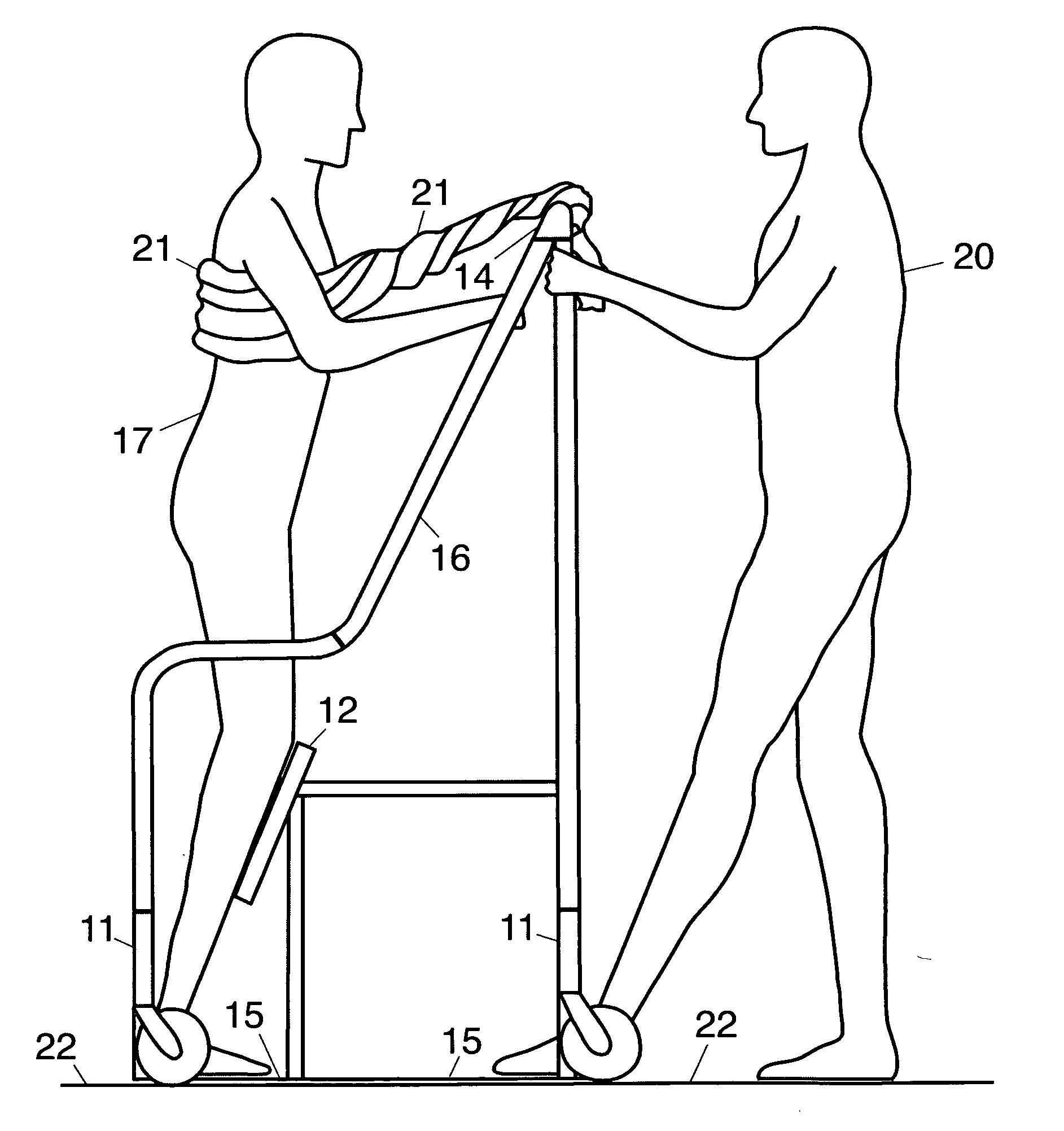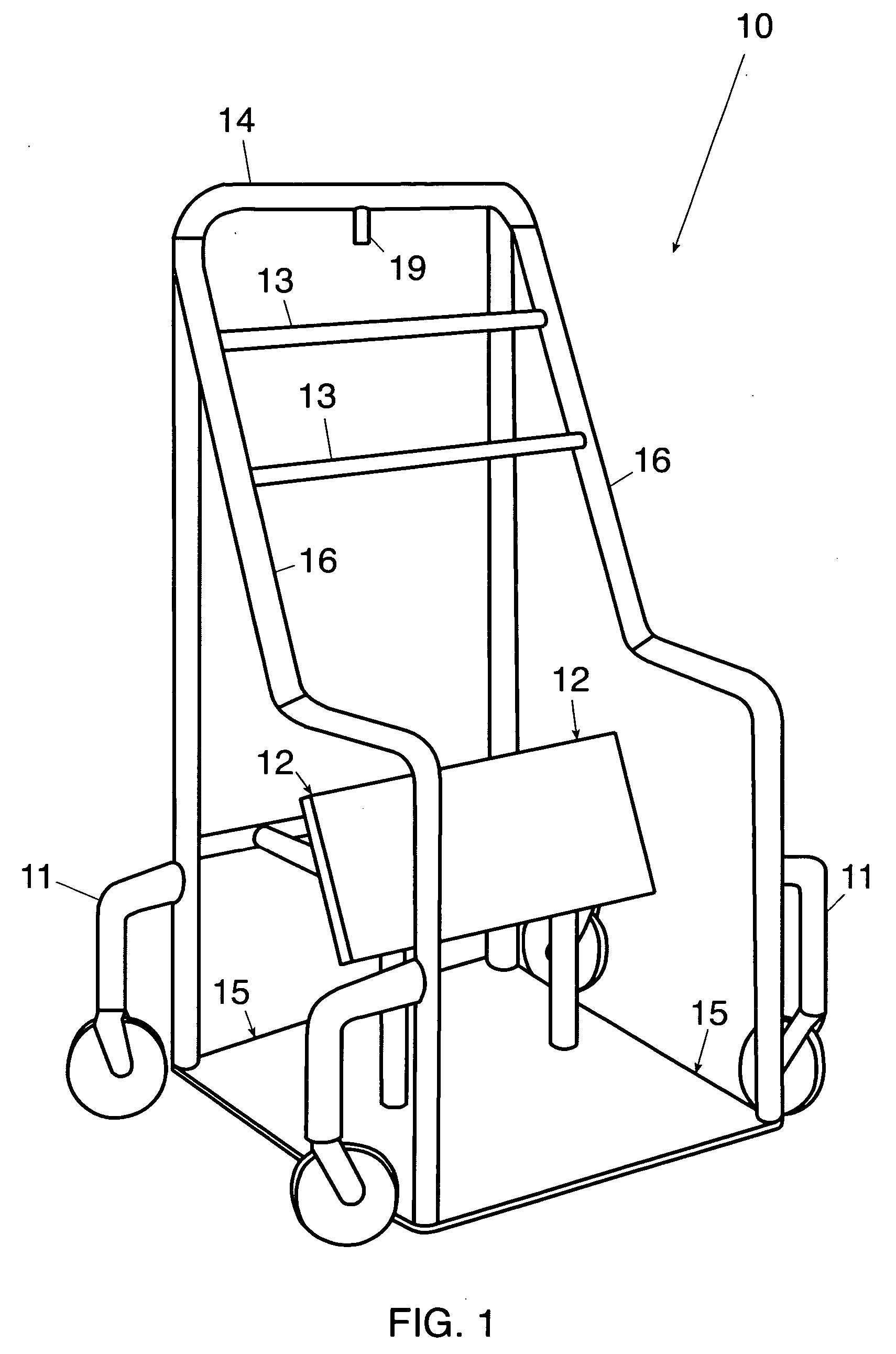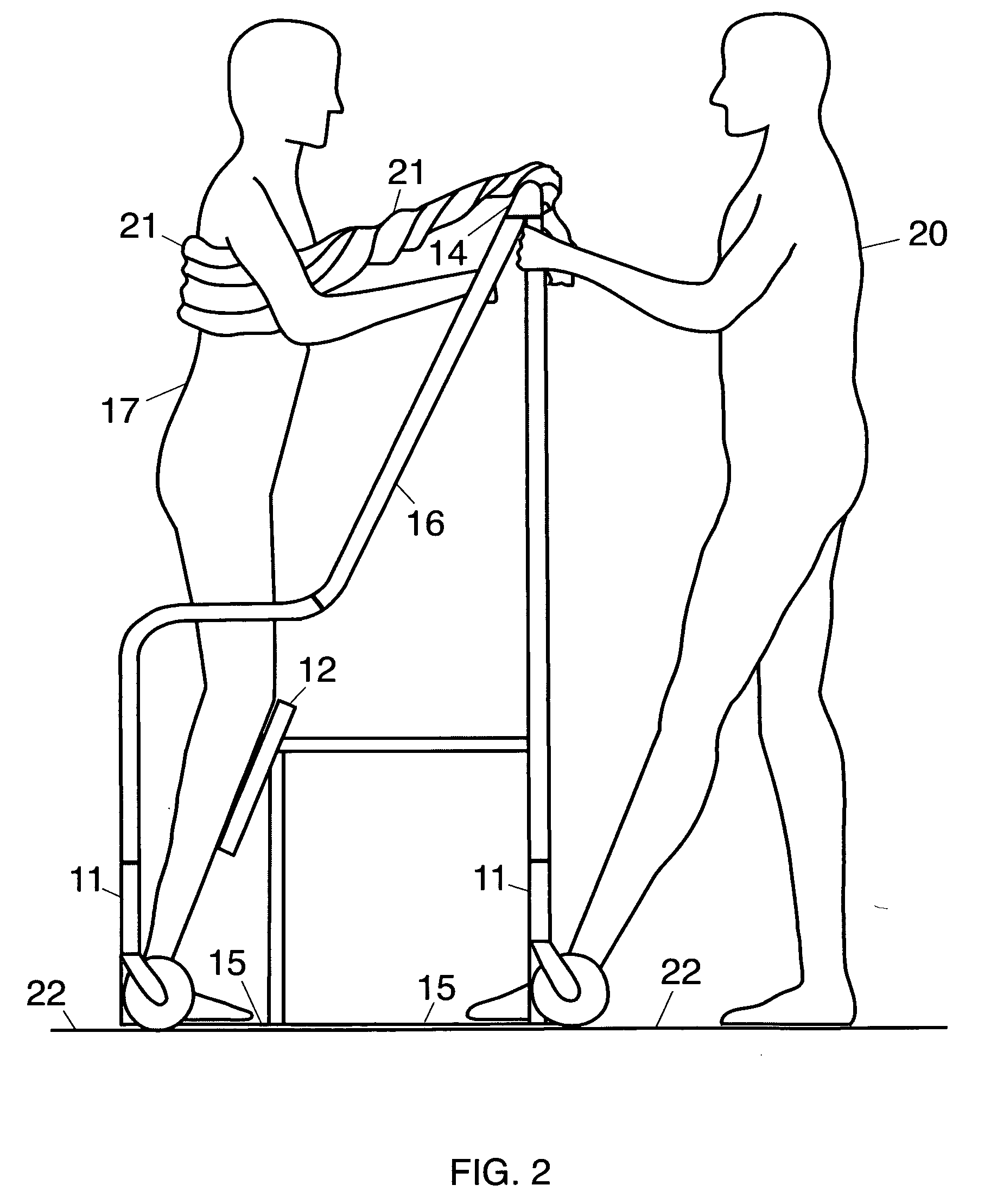Standing station
a technology of standing station and patient body, applied in the field of health care industry, can solve the problems of unsettling patients and their caregivers, limited maneuverability relative to beds, wheelchairs, chairs, and patient falls
- Summary
- Abstract
- Description
- Claims
- Application Information
AI Technical Summary
Benefits of technology
Problems solved by technology
Method used
Image
Examples
Embodiment Construction
[0039] The drawings depict a standing station generally designated 10.
[0040]FIG. 1 depicts the preferred embodiment of the standing station 10. The slanted sections of the frame 16 are supporting the grab bars 13. The uppermost section of the frame 14 has a peg 19 that enables the caregiver to secure the patient with an ordinary bedsheet.
[0041]FIG. 2 depicts a patient semi-kneeling on the standing station while the caregiver holds onto the frame of the device and stabilizes it with one foot. The standing platform 15 is essentially at floor level 22, and the wheel mounts 11 do not extend past the back edge of the standing platform. This allows the standing station to be moved sideways relative to chairs, commodes, beds and wheelchairs without moving away from the safety of the seating surface. It also means that the maneuverability of the standing station will be unaffected by power cords, brake levers or other obstacles found under hospital beds. The leg abutment pad 12 allows the...
PUM
 Login to View More
Login to View More Abstract
Description
Claims
Application Information
 Login to View More
Login to View More - R&D
- Intellectual Property
- Life Sciences
- Materials
- Tech Scout
- Unparalleled Data Quality
- Higher Quality Content
- 60% Fewer Hallucinations
Browse by: Latest US Patents, China's latest patents, Technical Efficacy Thesaurus, Application Domain, Technology Topic, Popular Technical Reports.
© 2025 PatSnap. All rights reserved.Legal|Privacy policy|Modern Slavery Act Transparency Statement|Sitemap|About US| Contact US: help@patsnap.com



